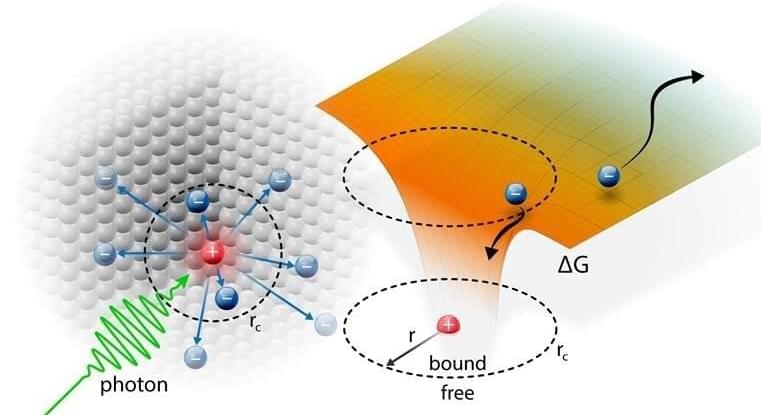Solar cells based on organic molecules offer potential advantages over conventional devices for converting light into electricity. These organic solar cells could be inexpensive, durable, and easy to make. However, organic cells do not yet have the performance that matches conventional devices. Scientists’ efforts to improve performance have been limited by their limited understanding of how electrons excited by light (or “photoexcited”) become “free carriers.”
In principle, free carriers flow across a material and emerge as an electrical current. Prior scientific studies suggest that photoexcitation leads to a tightly bound pair consisting of an electron and a hole. These studies did not describe how to overcome the strong binding forces to form free carriers. This new study reveals that more sites on neighboring molecules can accept electrons, explaining how free carriers form directly.
Published in Materials Horizons, this research developed a new model called Distribution Range Electron Transfer (DRET). Previous models for the generation of free carriers in organic solar cells have generally invoked new physical phenomena to explain experimental results. In particular, they have said that free carriers can form with efficiency that approaches 100% in a material where opposite charges are traditionally difficult to separate and use.
